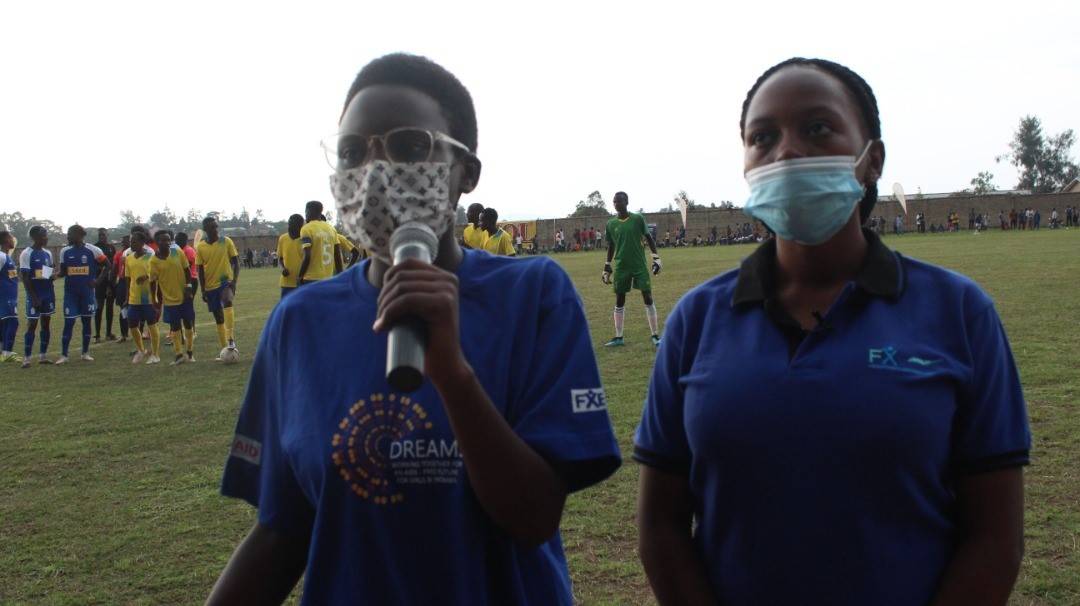Goal
IGIRE-Turengere Abana "BE RESILIENT-Let us protect the children" is a program implemented by FXB Rwanda providing HIV interventions to Orphans and Vulnerable Children (OVC), their households, and at risk adolescent girls and young women (AGYW) to reduce the new HIV infection incidences and vulnerability.
Background
The current IGIRE-Turengere Abana interventions adjusted from the former implemented New Partners Initiative and USAID Turengere Abana Program which got implemented consecutively since 2009. In 2009, FXB Rwanda partnered with USAID Rwanda Mission implement the New Partners Initiative (NPI) program. The program was initially aiming at reducing the vulnerability of orphans and vulnerable children and their households affected and/or infected by HIV. The programs main interventions involved economic empowerment to the affected OVC and their households as well as HIV prevention interventions (capacity building for OVC and their households).
With successful partnership in New Partners Initiative, FXB Rwanda was granted the implementation of USAID Turengere Abana program from 2012 to get implemented offering the same interventions reaching more population. The USAID Turengere Abana by then had the same intention as New Partners Initiative of improving the social and economic well-being of orphans and vulnerable children (OVC) and their families affected by HIV and AIDS.
From 2015 through 2020, it was found vital to continue reducing vulnerability by expanding the interventions from economic empowerment and HIV prevention interventions to include the nutrition and Water, Sanitation and Hygiene (WASH) aspects. The Nutrition component was introduced with the aim of improving the nutritional status of women and children (especially those under 2 years of age). In the same view, the WASH aspect aimed at improving the hygiene practices among the most vulnerable population in the districts which were targeted. The three components (OVC, Nutrition, and WASH) were comprehensively offered to the population in need to recover fully from HIV effects.
From 2018, the DREAMS component is getting implemented in this program aiming at prevention of new HIV infections among at risk Adolescent Girls and Young Women (AGYW). The component insists on bringing together the at risk AGYW in the safe spaces, providing them the HIV prevention skills; sexual, reproductive health and rights (SRHR); life skills; economic empowerment skills among others to facilitate their full capacity and impact their future prospects.
During 2022, USAID Turengere Abana transitioned to IGIRE-Turengere Abana implementing the interventions as those of USAID Turengere Abana besides the adjustments to implement the up to date HIV prevention strategies.
Current Situation
IGIRE-Turengere Abana currently intervenes in Orphans and Vulnerable Children (OVC) component reducing the vulnerability among Orphans and Vulnerable Children (OVC) and their households, and Determined Resilient Empowered AIDS-free Mentored and Safe (DREAMS) component to contribute in reduction of new HIV incidence among Adolescent girls and young women (AGYW) in target districts. The program is being implemented in all sectors of Rwamagana, Huye and Nyanza districts
Programming Strategies
Beneficiaries Engagement: USAID Turengere Abana programming model centers the beneficiaries in the whole process of the program. Their contribution is considered in design, implementation, evaluation and monitoring. Their engagement has been guaranteeing and revealing the sustained impacts
Community Engagement: Community local leaders, the stakeholders in the community, other government structures are engaged as means of securing the community stewardship but also the program’s ownership
Case Management: The program solves and provides interventions to the beneficiaries considering their individual needs. The high collaboration between beneficiaries, surrounding environment including the local officials and other stakeholders contribute in needs development, monitoring of the program provisions, and in evaluation and preservation of the impacts.


